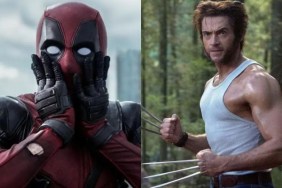
CraveOnline: I want to talk about the filmmaking. For a while now you’ve been shooting digitally but unlike other filmmakers you’re not trying to make it look like film.
Michael Mann: Right.
How does something like that benefit your films, like Blackhat or Public Enemies? What goes into that decision, and do you ever think about going back to film just for aesthetic purposes?
Sure. We were this close to shooting Public Enemies in film. We did some last minute tests, Dante [Spinotti] and I did some last minute tests, and decided “No. Let’s go digital.” There’s this very specific reason for it, and that was with that with film you’re looking at a very elegant historical document, so it removed you. With digital it looked like I’m in 1933 and this is really happening.
“I’ve never been interested in digital [looking] like film.”
Since I was going to turn the streets of Chicago back to where they were in 1933, and shoot the Biograph [Theater] at the Biograph, and shoot the [real Little Bohemia] Lodge at the real Lodge, in the real room that Dillinger was in, I didn’t want the film to be an historical artifact. I didn’t want the audience turned into observers. I didn’t want them to be observing. I wanted them internalized into Dillinger as much as possible.
The gangster is usually portrayed in American films as a phenomenon. He’s objectified. That’s not what I wanted. I wanted you to be subjectively inside this guy as much as possible, experiencing what he’s experiencing (which is tough because he’s experiencing not knowing where he’s going). So that led to digital.
I’ve never been interested in digital [looking] like film. To me it’s like steel in architecture. When steel was first used to support tall buildings in New York, they didn’t know what to make the buildings look like. So they took the typical maison – pediment, two to three stories, premier étage and then a ground floor – and instead of being three stories they made the middle 23 stories. So when you see these buildings, you could take 20 stories out, put it all down and you’ve got some guy’s country house in France.
“‘Manhunter’ I absolutely would have made digitally.”
In Chicago they developed this skyscraper where they took the form of the function that steel provides, and found an aesthetic that didn’t try to make it look like a stretched house. The first building that did that is the Monadnock Building in Chicago.
So too, I think that digital has eight, nine times the range of photochemical, and you can do so many different things with it. So to me the exciting thing about digital is to find the look that I want dramatically. The short answer is that with film you have various rules of thumb. The photo chemicals react in a static way. With digital you can control many aspects of the record you’re making. It imposes upon you a requirement then to pre-visualize. You have to know what you want ahead of time. You’re not going to find it by trial and error because there are too many possibilities.
That’s a very different approach – to pre-visualize, completely free of the medium, and then try and get that – than it is to have digital and use it to make it look like film. To me it’s a waste of digital to make it look like film.
That’s not to say… I would love to shoot on film. If the right subject came up I would shoot [on film] in a heartbeat.
Looking back at some of your earlier films which were made before digital is what it is now, if you were to make a Manhunter with digital available to you do you think you would have?
Oh yeah, absolutely I’d have done that. The Last of the Mohicans, I would probably have stayed photochemical. Manhunter I absolutely would have made digitally. But the big benefit of digital right now is digital cinema. Public Enemies got a lot of criticism because it looked bad. The digital didn’t look bad. People were critiquing that it looked digital. The digital didn’t look bad. What looked bad are the sloppy photochemical release prints. The lab, their standards were so low. There was stuff where if we caught them, we’d reject them, but they were sending them out anyway. If you look at the digital record of Public Enemies, like on a Blu-ray or something, it looks pretty good.






